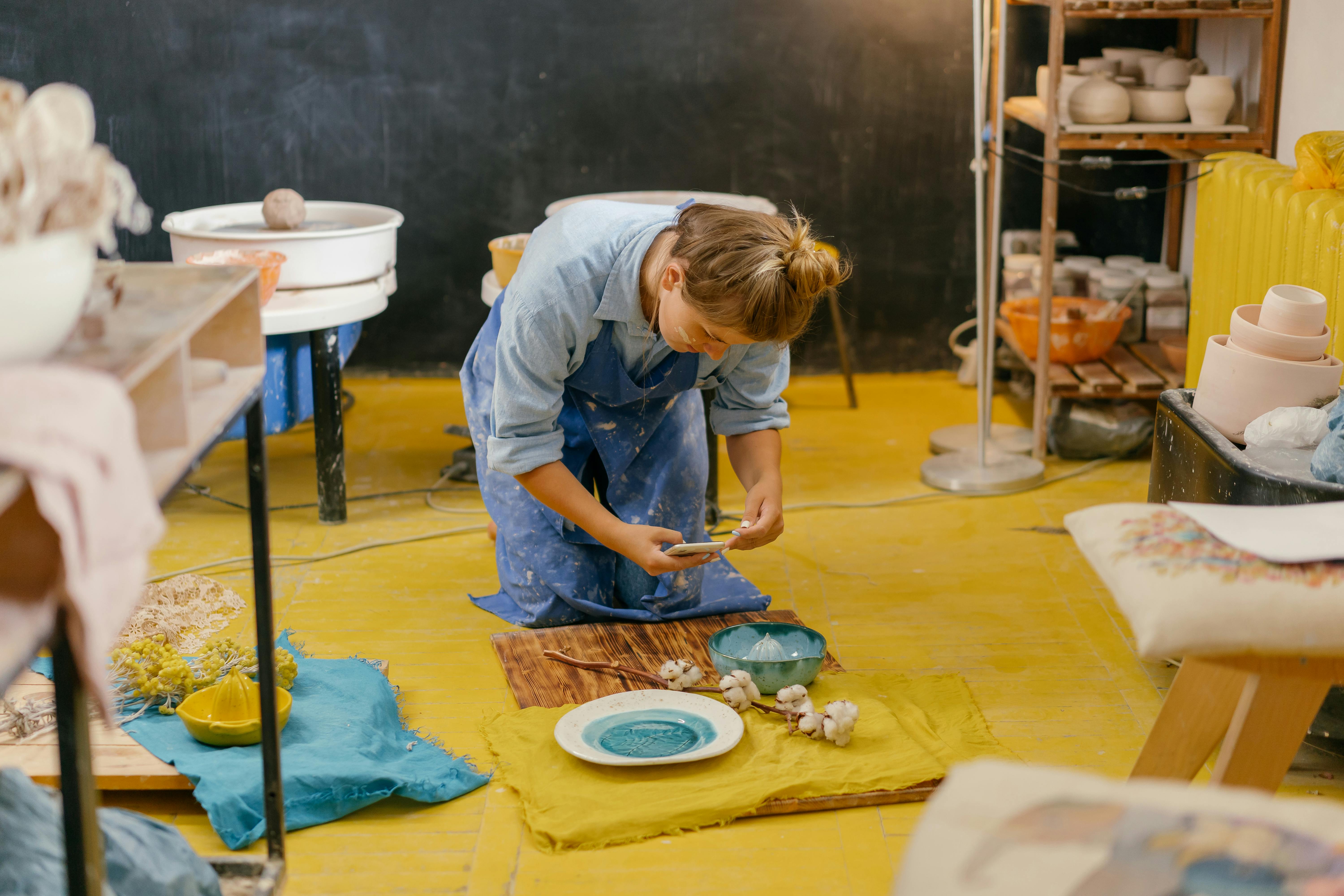Create a Professional Art Portfolio: A Step-by-Step Guide
by WriteSeen
Knowing how to create a professional art portfolio can be daunting in today's fast-paced creative world. You're not alone if you're feeling overwhelmed by the need to stand out.
In our guide, we'll show you how to:
- Craft an art portfolio that captures your unique story and artistic identity.
- Understand your audience to ensure every piece resonates effectively.
- Balance consistency and variety to spotlight your range and adaptability.
Know Your Audience and Purpose
Creating a professional art portfolio isn't just about showing your creations—it's about showcasing the right pieces for the right people. This step is crucial, as clear understanding of your audience gives your work direction and focus. Whether you’re targeting galleries, academic institutions, or commercial clients, tailoring your portfolio to fit their expectations will boost your chances of making a real impact. Your art tells a story, and knowing your audience helps align that story with the dreams, values, and aspirations of those who view it.
- Define your primary goals: Whether your aim is landing a place at an art school, impressing gallery owners, or enticing commercial clients, each serves a different purpose. Aligning your portfolio with these goals sets you up for success.
- Understand your audience’s preferences: Know if they prioritize innovation, technical skill, or storytelling. Use this insight to prioritize which art pieces to include.
- Research specific expectations: Each industry has its standards. Understanding these expectations ensures your portfolio doesn't just meet but exceeds what viewers look for.
- Stay informed on trends: Being in the know keeps your work relevant and captivating.
- Communication is key: Make sure your portfolio speaks clearly to its intended audience. You want it to resonate and convince.

Select Your Best Work: Quality Over Quantity
Your portfolio is only as impressive as the work it contains. Remember, it's all about showing your best side. Selecting the work that truly represents your talent and style should be your priority. Quality trumps quantity every time. A concise selection of outstanding works commands attention and leaves a lasting impression.
- Curate with purpose: Aim for 10-20 pieces that truly represent your best skills and vision. This resonates more effectively than an abundance of average work.
- Balance and cohesion: Choose pieces that align with a central theme or coherent style.
- Highlight your range: While cohesion is important, show diversity within your chosen theme or style to demonstrate versatility.
- Trust your instincts: Your personal connection to your work can be your best guide. Choose pieces that not only meet technical standards but evoke emotion.
Choosing quality over quantity in your portfolio speaks louder than showing everything you've ever created. Curation showcases discernment and confidence in your artistic choices.
Balance Consistency and Variety
Here's where you demonstrate not only your core skills but also your ability to branch out. Your portfolio should resonate with your distinct voice, yet highlight the range of your capabilities. Striking a balance between consistency in style and diverse expression of skills is key to a standout portfolio.
- Consistency builds identity: Establish a recognizable style that threads through your work.
- Variety reveals adaptability: Showcase pieces that display other techniques or mediums you excel in.
- Keep it cohesive: Variety should expand rather than dilute your artistic identity.
- Stay true to your brand: While exploring, ensure your portfolio aligns with your artistic narrative.
Portraying both consistency and variety gives potential clients or allies a fuller picture of your creative potential. It's about being a reliable artist who can also think outside the box.
Document Your Art Professionally
How you present your art can be just as important as the art itself. A professionally documented portfolio enhances your work's appeal and makes sure it’s seen in the best possible light. Capturing accurate representations of your work for both print and digital formats shows professionalism.
- Invest in quality photography: Use good lighting and a high-resolution camera to showcase your art in detail and true-to-life color.
- Angle and composition matter: Present your pieces from angles that tell the best story about each work.
- Consistent formatting enhances readability: Maintain consistent presentation styles to create a cohesive visual flow.
- Leverage technology: Use software tools to edit and enhance images for clarity without altering their integrity.
A well-documented portfolio is a nod to your professionalism and an assurance to prospective clients or partners that you value your work and their time. These details speak volumes, making your portfolio not just a showcase but an experience.

Craft a Compelling Artist Statement and Bio
Your art reflects your vision, but your artist statement and bio articulate it. Together, they provide context and build connections with your audience. These written components help viewers understand your motivations and journey, adding depth to your work. A strong artist statement speaks directly to the heart of what makes your work unique, while your bio showcases your history, skills, and ambitions.
- Tell your story briefly: Focus on what drives your passion for art and any key experiences that shape your work. Personal insights can foster a deeper connection.
- Be clear and concise: Avoid jargon and complex language. An effective statement communicates your message in a straightforward manner.
- Highlight achievements: Include notable exhibitions, awards, or collaborations. This builds credibility and highlights your success.
- Show, don’t just tell: Talk about your process and the themes within your work. This invites the viewer into your creative world.
Your artist statement is more than an explanation—it's your chance to create a narrative that resonates with the viewer and enriches their experience of your work.
Format Your Portfolio for Multiple Platforms
In today's digital age, having a versatile portfolio means adapting to both digital and physical formats. Whether your audience prefers flipping pages or clicking through a gallery, your portfolio should shine on every platform. This adaptability ensures accessibility and broadens your reach, opening up more opportunities for your unique talent.
- Create a digital version: Use online portfolio platforms or a personalized website. Ensure it is mobile-friendly and easily navigable.
- Consider print formats: Hard copies of your portfolio can be impactful for exhibitions, interviews, or face-to-face meetings.
- Consistent design: Keep your layout professional and clean. Consistent formatting across different formats aids in brand recognition.
- Test for usability: Ensure ease of access and navigation across all platforms to enhance your audience’s experience.
A well-formatted portfolio, adjusted for various platforms, allows you to engage with audiences wherever they are and however they choose to interact with your work.

Keep It Fresh: Regular Updates and Feedback
Your artistic journey is ever-evolving, and your portfolio should reflect that dynamism. Regular updates keep your portfolio relevant and showcase your progression over time. Engaging with feedback helps you fine-tune your work and approach, ensuring you remain at the top of your game.
- Schedule regular updates: Think about adding new work or refining current pieces to align with your evolving style or industry trends.
- Seek constructive feedback: Use peer reviews to gain fresh perspectives. This helps identify strengths and areas for improvement.
- Reflect your growth: Add new skills, techniques, or certifications as you evolve in your craft.
- Stay informed: Keep an eye on industry trends to ensure your portfolio is both current and competitive.
Regular updates and incorporation of feedback showcase your commitment to self-improvement and dedication to staying ahead in the creative field.
Conclusion
Understanding how to create a professional art portfolio is a crucial step in building your presence in today’s competitive creative landscape. A well-curated, purpose-driven portfolio not only showcases your talent—it tells your story, highlights your versatility, and speaks directly to the people who matter most in your field.
By choosing your strongest pieces, documenting them with care, and updating your collection regularly, you demonstrate both professionalism and passion. Whether you're applying to art school, seeking gallery representation, or landing commercial work, a strong portfolio opens doors.
Want to present your work with impact? Learn how to create a professional art portfolio and share it confidently on WriteSeen—a platform built to support artists with secure, timestamped uploads and a vibrant creative community. Join WriteSeen today.
TAGS